Learning to Grow
Bicentennial Podcast

Founders & Futurists
Discover our healthcare visionaries and imagine the possibilities ahead as MCPHS celebrates its Bicentennial.
About Founders & FuturistsLearning to Grow
As the 20th century dawned, research and advances – such as the discovery of modern antibiotics – began to set the stage for a major disruption in healthcare.
Breakthroughs Bring Change
Scientists started to unravel the mysteries of the body, and outdated ideas about disease were replaced by a better understanding of how people could be treated. The more scientists learned, the more knowledge the College was able to pass on to students.
The pace of innovation increased exponentially in the second half of the century, beginning with key breakthroughs such as the discovery of DNA and the first organ transplant in the 1950s. As a result, healthcare grew increasingly complex and a wide range of new specialties emerged, creating a need for more training and collaboration.
In response, the College embraced sustainable expansion and diversification of people, programs, and opportunities within the health and life sciences fields. Initiatives such as our continuing education programs began to emerge.
How has MCPHS grown and changed over the last 40 years?
In 1979, the name of our institution was changed to Massachusetts College of Pharmacy and Allied Health Sciences, and we were awarded additional degree-granting authority. The shape of things to come took on a new level of meaning when our flagship campus in Boston became residential in the mid-1990s.
Inspired by former President Charles Monahan’s mantra, “You have to grow,” the University’s expansion accelerated, coinciding with another name change to Massachusetts College of Pharmacy and Health Sciences in 1999. A period of breathtaking growth followed, transforming MCPHS into one of the most comprehensive independent health- and life-sciences universities in the world.
Diversification was key. As we started getting some momentum, the success built on itself and we added new campuses, new programs, new employees, new facilities, and we got into a growth mode that really took off over the course of the last 25 years.
Richard J. Lessard | President of MCPHS

Notable milestones during this period include:
1999 – Academic Affairs is reorganized according to a strategic plan, and new units and schools are created, including the School of Arts and Sciences. The same year, MCPHS also purchases and begins to renovate the vacant Albert Spencer Lowell building in Worcester near two medical centers.
2000 – First building of the Worcester campus opens at 19 Foster Street, housing an auditorium, classrooms, labs, a library, computer lab, student lounge, and study space.
The opening of our Worcester campus in 2000 marked a major milestone for MCPHS
2002 – MCPHS expands to Manchester, NH when the University assumes responsibility for Notre Dame College’s Physician Assistant Studies Program upon its closing. MCPHS also acquires the Forsyth School for Dental Hygienists, which was founded in early 1900s.
2003 – New building at 1260 Elm Street opens to students in Manchester.
2005 – Living and Learning Center – later renamed for Thomas Henry Borysek – opens in Worcester. It includes admin and faculty offices, classrooms, a tech center, patient assessment and simulation labs, and six floors of suite-style housing.
2007 – School of Nursing, School of Physician Assistant Studies, and School of Radiologic Sciences (later renamed the School of Medical Imaging and Therapeutics) are established, building on many years of University programming in these fields. Construction also begins on the 6-story Richard E. Griffin Academic Center on Huntington Avenue in Boston, which will significantly increase the University’s footprint.
2008 – Purchase and renovation of 40 Foster Street in Worcester to include smart classrooms, an auditorium, and a street-level lab with a model pharmacy.
2011 – School of Physical Therapy is developed on the MCPHS Worcester campus.
2012 – School of Optometry is founded at MCPHS Worcester campus, with classes beginning in in state-of-the-art teaching facilities with cutting-edge equipment. The campus features the Eye and Vision Center and 10 Optical retail store, which serve the local community.
MCPHS has added programs in a wide variety of fields over the last 25 years.
2015 – MCPHS acquires the New England School of Acupuncture, a leader in acupuncture education and the oldest school of acupuncture in the United States.
2017 – Brant Hub formally dedicated in Manchester, expanding the footprint of MCPHS in the city.
2018 – School of Professional Studies founded to help MCPHS bring its vast educational offerings to adult learners and working professionals. The University establishes the School of Healthcare Business the same year, with programs designed to empower leaders across the healthcare field.
2019 – Occupational therapy programs move under a new School of Occupational Therapy.
What external trends influenced the rapid evolution of MCPHS?
As we added programs in fields ranging from dental hygiene to optometry to acupuncture, we were also able to create unique interprofessional practice and education (IPE) experiences for students. Team-based care was becoming industry best practice, and we were on the forefront of preparing healthcare professionals to thrive in a collaborative environment.